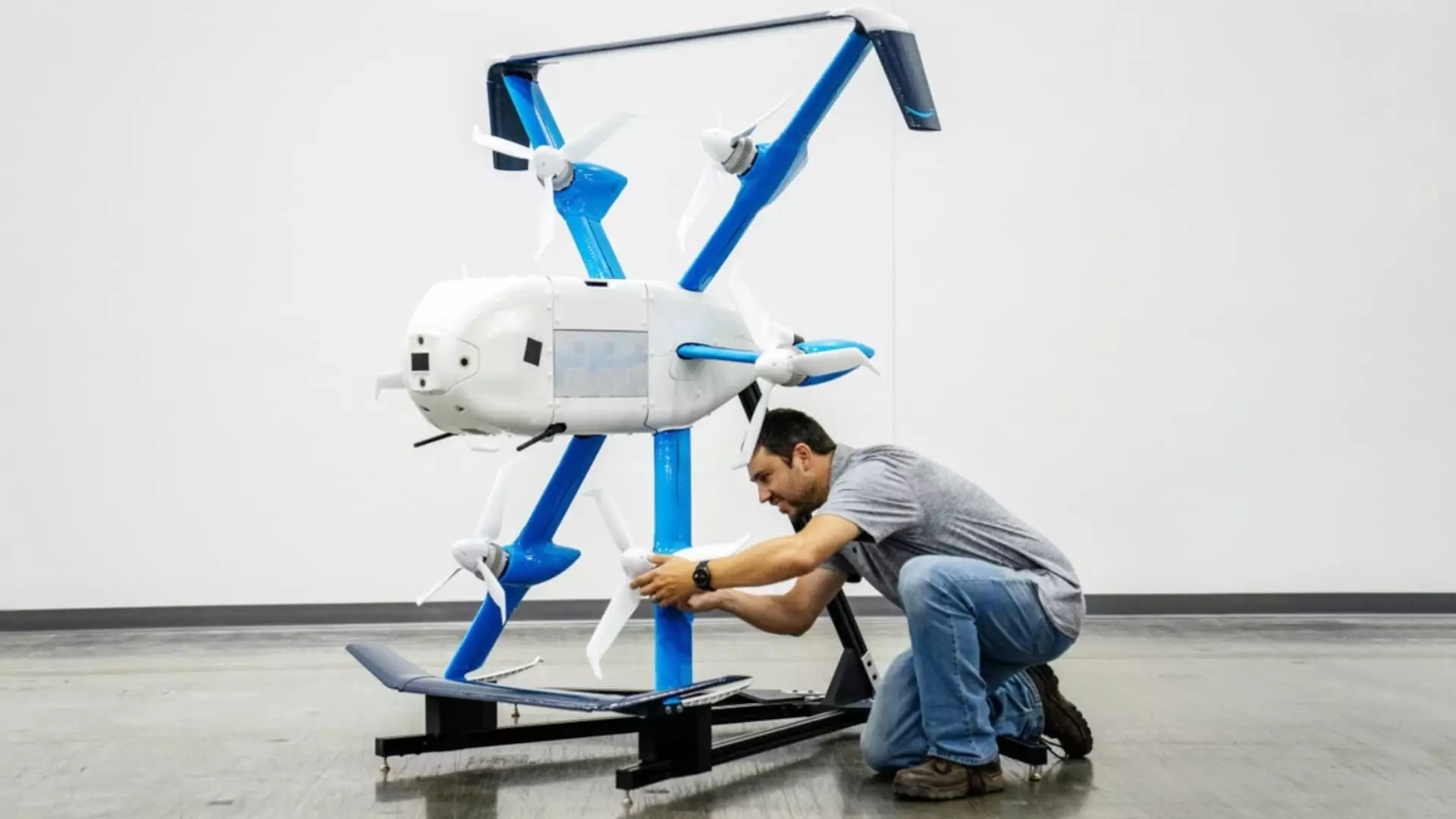Amazon has announced a pivotal progression in its drone delivery program with the introduction of a new model, the MK30, which recently gained regulatory approval for test flights. Despite the technological advancements and aspirations the company has demonstrated, the journey to an operational drone delivery service has been fraught with challenges, including regulatory hurdles and community pushback. Analyzing these developments sheds light on both the potential benefits and the obstacles Amazon will face as it attempts to revolutionize last-mile delivery.
A New Era of Drone Technology
The MK30 drone represents a significant advancement in Amazon’s pursuit of efficiency and innovation in delivery logistics. With capabilities to navigate light rain and operate over double the range of its predecessors, the MK30 is touted as a pioneer in the delivery drone sector. This strategic focus on creating an advanced aerial vehicle is part of Amazon’s broader goal to streamline its operations and enhance customer satisfaction through faster delivery times.
Obtaining the Federal Aviation Administration’s (FAA) permission to conduct beyond visual line-of-sight (BVLOS) flights marks an essential milestone for Amazon Prime Air. This approval is not merely symbolic; it signals regulatory recognition of the need for more flexible drone operations that could reshape the landscape of delivery services. However, while Amazon celebrates this regulatory milestone, it must remain vigilant about an evolving set of challenges that accompany such innovative pursuits.
Navigating the regulatory labyrinth surrounding drone operations has proven to be a daunting task for Amazon. Despite the company’s investment of billions into the Prime Air program, advancements have consistently been hindered by complex legal frameworks and safety concerns. Earlier regulatory waivers, such as the one granted to Amazon for limited operations in College Station, Texas, underscore the cautious approach the FAA is taking towards drone deliveries.
The complications faced by the company illustrate the balancing act that regulators must perform, weighing technological innovation against public safety. To foster a conducive environment for drone usage, both regulations and community input must evolve alongside technological capabilities. This entails a level of transparency and ongoing communication between Amazon, regulators, and municipalities—an area where Amazon has experienced setbacks, including executive departures and community resistance.
Amazon’s venture into drone delivery inevitably intersects with local communities, leading to varying responses. In College Station, for instance, significant opposition arose due to noise concerns, necessitating Amazon to engage with local authorities and residents. The complexities of public sentiment highlight that technological advancements are not solely a matter of engineering but also of social acceptance.
Amazon’s approach to the concerns raised by residents reveals a critical aspect of its delivery strategy: the willingness to adapt. The promised identification of new drone delivery sites indicates an acknowledgment of community sensitivities and a commitment to mitigating adverse impacts. However, balancing innovative logistics with community feedback remains a significant barrier for Amazon that could influence its operational success.
As Amazon pursues its drone delivery aspirations, it finds itself in a competitive landscape populated by various players, including well-established companies like UPS and Walmart and startups like Zipline and Matternet. Each competitor is vying to capture market share in what is anticipated to be a burgeoning industry. This competition not only drives innovation but also raises the stakes for organizations aiming to establish themselves as leaders in the drone delivery sector.
While the introduction of the MK30 and recent regulatory approval signify promising strides for Amazon, the company must navigate a minefield of competition and community sentiment. Its ability to effectively communicate, foster trust, and collaborate with residents, regulators, and other stakeholders will be as crucial as its technological advancements.
As Amazon launches drones near its Tolleson, Arizona warehouse, the coming months will serve as a litmus test for the viability and acceptance of drone deliveries. The pressing question remains whether Amazon can overcome the multifaceted challenges it faces. With strategic foresight, ongoing engagement with communities, and adaptive operational practices, the company has the potential to redefine the logistics landscape. However, success will depend not only on technological prowess but also on building trust among the very communities it aims to serve. As we observe the unfolding dynamics in the realm of drone logistics, the intersection of innovation and public sentiment will undoubtedly shape Amazon’s trajectory in the coming years.


Leave a Reply